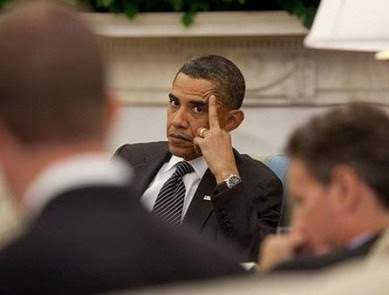- Mar 11, 2015
- 100,842
- 108,129
- 3,645
Once again research shows just how much misinformation is presented on matters of race in the great gaslighting campaign.
Viral post gets it wrong about extent of slavery in 1860
By Louis Jacobson

When we took a closer look, we found that the percentage of slaveholding families was dramatically higher than what the meme said, and that the number of slaves owned by blacks was presented in a misleading way.
'At the PEAK of Slavery in 1860, Only 1.4% of Americans owned slaves.'
The primary source of data about slaves and slaveholding in 1860 is that year’s census.
Census data from 1860 isn’t perfect, said University of North Carolina historian Joseph T. Glatthaar, author of Soldiering in the Army of Northern Virginia: A Statistical Portrait of the Troops Who Served under Robert E. Lee. But it remains "the best evidence we have."
In the big picture, the 1860 Census counted a total of 31,443,321 people, of which 3,953,760 were slaves. So slaves accounted for 12.6 percent of the national population.
Slaveholding by personal or family unit, 1860

Source: Joseph T. Glatthaar, Soldiering in the Army of Northern Virginia: A Statistical Portrait of the Troops Who Served under Robert E. Lee
State-by-state figures show some variation. In Mississippi, 49 percent of families owned slaves, and in South Carolina, 46 percent did. In border states, the percentage was lower -- 3 percent in Delaware and 12 percent in Maryland. The median for slaveholding states was about 27 percent.
Using the same data, it's possible to calculate the statistic of dubious value cited in the viral image -- the percentage of all American families that owned slaves. The answer: 7.4 percent, which about five times greater than what the meme says.
Percentage of families owning slaves,
1860 Census

Source: 1860 Census
'3,000 blacks owned a total of 20,000 slaves the same year.'
The most solid data we found was published in an article in the Root by Henry Louis Gates Jr., a Harvard University historian. Gates cited research by Carter G. Woodson, an African-American historian who died in 1950. He found that in 1830, a total of "3,776 free Negroes owned 12,907 slaves."
"I'd imagine that the (20,000 figure) quoted in the meme is probably not that far off from being true," said Junius Rodriguez, a Eureka College historian and author of Slavery in the United States: A Social, Political, and Historical Encyclopedia.
But the 20,000 number is not necessarily as eye-popping as the meme makes it out to be.
For starters, even if the number is accurate, it would still account for just a tiny percentage of all slaves held in the United States in 1860 -- specifically, one half of 1 percent. That runs contrary to the post’s framing.
In addition, the figure is almost certainly inflated by a legal quirk in most antebellum southern states.
It includes "many ‘owned’ family members whom they had purchased to become free," said Eric Foner, a Columbia University historian and the author of such books as The Fiery Trial: Abraham Lincoln and American Slavery. "You could not free a slave in most southern states without sending them out of the state."
Gates, writing in the Root, noted that the late historian Thomas J. Pressly used Woodson's statistics for 1830 to determine that about 42 percent of these black slaveholders owned just one slave. To Gates, this suggests that many -- though hardly all -- black "slaveholders" legally needed to "own" a family member such as a wife or child.
As Woodson wrote in his 1924 book Free Negro Owners of Slaves in the United States in 1830, "In many instances the husband purchased the wife or vice versa. … Slaves of Negroes were in some cases the children of a free father who had purchased his wife. If he did not thereafter emancipate the mother, as so many such husbands failed to do, his own children were born his slaves and were thus reported to the numerators."
Our ruling
Viral post gets it wrong about extent of slavery in 1860
Viral post gets it wrong about extent of slavery in 1860
By Louis Jacobson
'At the PEAK of Slavery in 1860, Only 1.4% of Americans owned slaves.'
The primary source of data about slaves and slaveholding in 1860 is that year’s census.
Census data from 1860 isn’t perfect, said University of North Carolina historian Joseph T. Glatthaar, author of Soldiering in the Army of Northern Virginia: A Statistical Portrait of the Troops Who Served under Robert E. Lee. But it remains "the best evidence we have."
In the big picture, the 1860 Census counted a total of 31,443,321 people, of which 3,953,760 were slaves. So slaves accounted for 12.6 percent of the national population.
Slaveholding by personal or family unit, 1860
Source: Joseph T. Glatthaar, Soldiering in the Army of Northern Virginia: A Statistical Portrait of the Troops Who Served under Robert E. Lee
State-by-state figures show some variation. In Mississippi, 49 percent of families owned slaves, and in South Carolina, 46 percent did. In border states, the percentage was lower -- 3 percent in Delaware and 12 percent in Maryland. The median for slaveholding states was about 27 percent.
Using the same data, it's possible to calculate the statistic of dubious value cited in the viral image -- the percentage of all American families that owned slaves. The answer: 7.4 percent, which about five times greater than what the meme says.
Percentage of families owning slaves,
1860 Census
Source: 1860 Census
'3,000 blacks owned a total of 20,000 slaves the same year.'
The most solid data we found was published in an article in the Root by Henry Louis Gates Jr., a Harvard University historian. Gates cited research by Carter G. Woodson, an African-American historian who died in 1950. He found that in 1830, a total of "3,776 free Negroes owned 12,907 slaves."
"I'd imagine that the (20,000 figure) quoted in the meme is probably not that far off from being true," said Junius Rodriguez, a Eureka College historian and author of Slavery in the United States: A Social, Political, and Historical Encyclopedia.
But the 20,000 number is not necessarily as eye-popping as the meme makes it out to be.
For starters, even if the number is accurate, it would still account for just a tiny percentage of all slaves held in the United States in 1860 -- specifically, one half of 1 percent. That runs contrary to the post’s framing.
In addition, the figure is almost certainly inflated by a legal quirk in most antebellum southern states.
It includes "many ‘owned’ family members whom they had purchased to become free," said Eric Foner, a Columbia University historian and the author of such books as The Fiery Trial: Abraham Lincoln and American Slavery. "You could not free a slave in most southern states without sending them out of the state."
Gates, writing in the Root, noted that the late historian Thomas J. Pressly used Woodson's statistics for 1830 to determine that about 42 percent of these black slaveholders owned just one slave. To Gates, this suggests that many -- though hardly all -- black "slaveholders" legally needed to "own" a family member such as a wife or child.
As Woodson wrote in his 1924 book Free Negro Owners of Slaves in the United States in 1830, "In many instances the husband purchased the wife or vice versa. … Slaves of Negroes were in some cases the children of a free father who had purchased his wife. If he did not thereafter emancipate the mother, as so many such husbands failed to do, his own children were born his slaves and were thus reported to the numerators."
Our ruling
Viral post gets it wrong about extent of slavery in 1860
 ..
.. 








